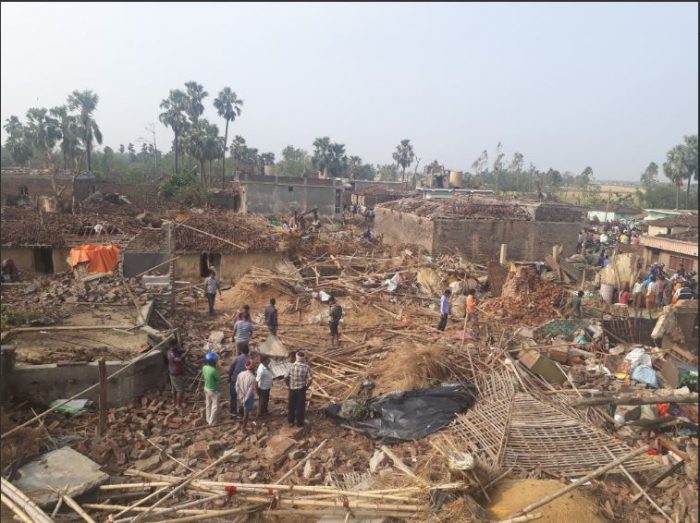KATHMANDU: Emphasis was laid on the need of treating individuals or communities affected by disaster or conflicts according to principles of the basic humanitarian standards.
At a seminar organized on the occasion of World Humanitarian Day through a virtual medium, speakers expressed the view that three-tier of government, NGOs, and other concerned bodies should be more responsible and accountable in order to make humanitarian assistance more effective and systematic as per the standards keeping human rights and values of victims during a disaster in mind.
The Country Representative of the Asian Disaster Preparedness Centre, Man Bahadur Thapa, emphasized the need for collaboration with different organizations in the humanitarian sector.
He mentioned, “We are not able to take the Humanitarian Standards at the Province and Local Level, even if we can reach the Local Level we are not able to strengthen their capacity. So there is a lot to do on implementing the humanitarian standards. His presentation included the information about Core Humanitarian Standard.”
Thapa also shed light on the importance and utility of the Asian Preparedness Partnership Humanitarian Standard (APP HS) tools — Core Humanitarian Standard Assessment Tool (CHSAT), Institutional Capacity Assessment Tool (ICAT), and Self-Assessment Tool for Institutional Engagement (TIE).
Similarly, the Chairperson of the Disaster Preparedness Network (DPNet), Surya Bahadur Thapa, shared that victims would get justice if basic humanitarian standards could be followed on disaster-related incidents as Nepal is at high risk of natural disaster.
Likewise, General-Secretary of DPNet, Dr Raju Thapa, presented a working paper about the experience relating to applying the humanitarian standard for humanitarian assistance in Nepal.
He added, “We are yet not able to interlink social security with Disaster Risk Reduction and Management (DRR&M) in Nepal, we need to do this. The Government of Nepal is implementing 86 different types of Social Security schemes. About 3.5 million people have already been benefited through social security allowance in Nepal.”
Disaster Risk Reduction and Management expert, Sunil Shakya, delivered a presentation about the CHS Training Manual where he talked about the manual layout included the session plan, reading materials, presentation slides.
“The target group of the manual is humanitarian actors. There are 12 session plans in the manual including the session about the legal provisions on humanitarian assistance and disaster management historical backgrounds of humanitarian principles and standards, commitments of Core Humanitarian Standard (CHS), Sphere Standard, preparation of Sphere exercise, the exercise of Sphere Standard, etc”, he shared.
Similarly, Chief Reporter of the Rashtriya Samachar Samiti (RSS), Krishna Adhikari, presented the Core Humanitarian Standard (CHS) and its rollout in the Melamchi flood based on field observation and discussion with the concerned agencies.
His presentation included the nine commitments of CHS, CHS monitoring tools; based on the commitments, he presented that the Local Level Government and NGO’s have partial achievement and the medium achievement respectively; and the achievement of the private sectors was minimal.
The presentation also incorporated the tool for the assessment of the Institutional Capacity for applying the CHS based on the 8 indicators, where he presented a similar result as the first tool.
The National Disaster Risk Reduction Centre under the Asian Preparedness Partnership Programme with the support of the Asian Disaster Preparedness Centre has prepared three different materials to implement basic humanitarian standards prepared on the basis of experiences of different countries of the world.
Pushkar Khati, Member Secretary, Social Welfare Council (SWC), Hum Kala Pandey, Joint Secretary and Chief of Disaster and Conflict Management Division, MoHA, Dr. Samir Kumar Adhikari, Chief of Health Emergency Operation Center (HEOC), Ministry of Health and Population (MoHP), Rishi Raj Acharya Under Secretary of Ministry of Federal Affairs and General Administration (MoFAGA), Bed Nidhi Khanal Under Secretary, National Disaster Risk Reduction and Management Authority (NDRRMA), Santosh Dahal, Coordinator Association of International ING Task Group on Disaster Management and Climate Change (AINTGDMCC), Prem Awasthi, United Nations Resident Coordinator Office (UNRCO) as well as 91 participants from different agencies had joined the virtual program.
RSS









Comment